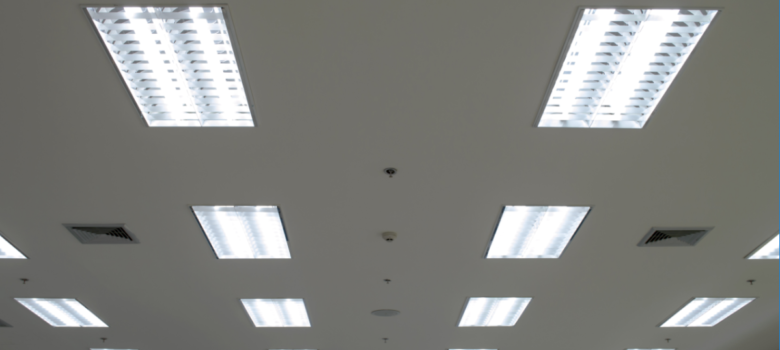
Lighting can be a major drain on the electricity bill in an office. In this blog, we are going to look beyond the obvious switch to LED lighting and ask what else can be done to lower your lighting costs, and what would make sense for your business space.
Dimmer switches
For small spaces, dimmers can be a simple and effective way to control the amount of light in a room. Modern LED lights can be fitted with dimmers that mean energy used is directly proportional to the level of the light, so just dimming the light slightly will save energy. The problem with this is that it requires someone to constantly control the lighting, or it will be ineffective. For domestic use this may be fine, but in a commercial space, employees are less likely to use the dimmer.
Occupancy-sensing lighting
Occupancy sensors are great for offices and other commercial spaces, because they only allow lights to stay on when someone is present in the space. It is relatively inexpensive to install and it ensures energy is not being wasted lighting unused space. Some businesses, especially those with larger spaces to light, might want to go beyond this, however.
Photoelectric lighting control
Photoelectric lighting sensors turn the lighting on at dusk and off at dawn, by sensing the amount of natural light in the space. These are often used externally for car parks, porches and shop windows for example; but they can also be integrated into an indoor system.
They are useful because they ensure that artificial light is not being used when natural light is there to do the same job. When combined with occupancy sensing, you really do limit the amount of artificial light being used. This can be further enhanced by using an automated system that automatically dims to reach a preset illumination level; this is sometimes referred to as constant illuminance control.
 Intelligent lighting systems
Intelligent lighting systems
There are a number of intelligent lighting systems – like the DALI system – which create a means to control a buildings lighting centrally, as well as using the controls mentioned above. This type of system goes over and above what we have discussed until now, because it has a number of useful tools such as: identifying when bulbs have stopped working, or when there is a fault in the system, ability to control how different lamps are grouped, the ability to adjust to different lamp types and ensure constant illuminance, and the ability to add a digital interface to control the lighting, allowing more levels of control. It therefore makes it easy to adjust the desired levels of illuminance, or the times at which lights are required to be in use, for example.
This sort of system is fantastic to see in action, but is not always the most cost-effective option. It is often found in larger new-build commercial properties to ensure building regulations are met and the energy efficiency standards reached. It would probably be overkill for a small office or retail space, especially for a refurbishment. There is likely to be a good option here for everyone however, whether you want to add some basic automation, or a full automatic control system, there are options available to suit you.
Think we missed something? Do you have a different opinion?
Comment below to get your voice heard…












No Comments yet! Be the first one.